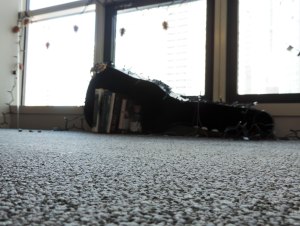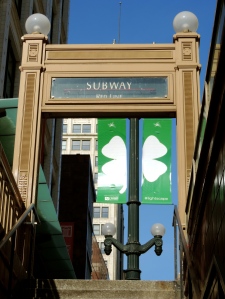Students find Loyola’s increasing tuition too pricy, pushing them to partake in the grueling task of commuting in Chicago and wishing the university would up financial aid offerings.
“The reason that I do commute is because of the cost,” said Lauren Gestes, 21, a junior psychology major. “I lived on campus my freshman and sophomore year, but the cost got too much, so now I commute.”
In January of this year, Loyola’s Office of the President sent out its yearly email informing students of a tuition increase. This year, tuition for the 2014-2015 academic year increased 2.5 percent, room rates increased by 2 percent and student activity fees increased by 3.3 percent.
According to Loyola’s Campus Transportation website, commuter students utilizing cars to get to school are required to purchase parking permits in order to park in any of the three Lake Shore campus commuter lots: the Main Structure near Halas, Fordham Garage or West Loyola Lot. At this time, there is no commuter parking area at Loyola’s Water Tower campus. For the 2013-2014 academic year, the parking permit cost $449; the 2014-2015 permit cost is not yet published.

The Main Structure is one of three commuter parking lots for students. (photo credit: Elizabeth Romanski)
Commuting negatively affects grades and relationships
Rachel Audisho, 21, a junior economics major, has been commuting to Loyola for over two years. Audisho lives in Rogers Park, about a 15-minute drive to campus. While the main reason she commutes is her close proximity to school, Audisho also said Loyola’s tuition was an additional factor in her decision.
For Gestes, her commute is quite a bit more extensive; it takes her about an hour by car and usually longer by train to get to school. Gestes also said she feels that the long commute has negatively affected her grades since she began commuting a year ago.
“Driving or having to take the train actually takes a lot out of me,” Gestes said. “So, when I get home I am really tired and it is hard to motivate myself to do homework.”
Gestes and Audisho agreed that regardless of how long their commute is, just having to do it also significantly affects their friendships with students who live on campus.
“With my friends at Loyola, it affects our relationship because I see them way less,” Gestes said. “A lot of my friends live at Water Tower campus, and I am only ever at the Lake Shore campus. So, it is really hard to get together with our different schedules.”
Audisho said that in order to see her friends, she not only has to make extra trips but also work diligently to coordinate schedules.

For junior Lauren Gestes, 21, commuting by car takes her an hour, sometimes longer. (photo credit: Elizabeth Romanski)
Commuting means having to create the perfect class schedule
But, coordinating schedules to meet with friends isn’t the only organization needing to be done when commuting. Both Audisho and Gestes said that creating the ideal class schedule is key to a successful and easier commuter life.
Gestes said she can’t take early classes because of the time it takes her to get to Loyola, but that she also hates taking late classes, as that forces her to drive back home in the dark. However, Gestes said that sometimes the classes she needs take to graduate are at times that cause her to have to take once a week evening classes that sometimes go until 9:00 p.m.
“I feel that it is really tough at times. And, it is really hard because I can’t be very involved on campus,” Gestes said.
With her close proximity to campus, Audisho said she prefers to take early classes.
“I try to make it so that my classes start early in the day in order to make sure that I get a parking spot before the lot fills up,” Audisho said.
While Loyola does provide commuter parking, the spaces are on a first come, first served basis.
Both Audisho and Gestes said they find the commuter life stressful and challenging.
Gestes said she feels Loyola is unwilling to help commuter students and finds the lack of scholarships available and the required meal plan for all students living on campus disappointing. She said both further restrict students’ finances and ultimately force students to commute or transfer to cheaper universities.
Audisho said she wishes Loyola would increase its financial aid award packages so that all students could financially have the opportunity to live on campus.
“While commuting has been a way to save money throughout college, I feel it takes away from getting the full college experience,” Audisho said. “Living away from home is something every student should get a chance to experience as it promotes independence and greater discipline.”
Click below to view a map of Audisho and Gestes’ commute:
https://maps.google.com/maps/ms?msid=216479798232308545567.0004f7f5af9899c28a8eb&msa=0












